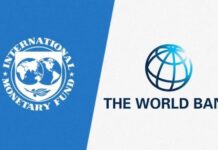Drought response continues across the country with three million people receiving life-saving assistance every month, according to United Nations Office for Humanitarian Coordination (OCHA).
The post-Gu analysis indicated that humanitarian assistance has prevented further deterioration in many areas. Alongside life-saving assistance, early recovery and restoration of livelihoods is critical in order to make lasting improvements to food security.
OCHA says, over 21 million heads of livestock have been treated against diseases, benefiting 3.2 million people. Some 2.8 million beneficiaries also received livestock and agricultural input support during the Gu season to protect their livelihoods and local production.
This includes more than 240,000 rural people who benefited from cash transfers combined with farming inputs to meet immediate food needs while securing a Gu harvest. More than 950,000 people were provided with sustained access to safe water since the beginning of the year.
Additional resources are required to continue famine prevention activities in the second half of the year. Critical sectors such as Food Security, Health and WASH are already falling short of their target.
Limited resources for shelter, protection and education are resulting in critical gaps and leading to the risk of, for example, the closing down of gender-based prevention and response programmes in areas where protection incidents are reported to be on the rise.
“New arrivals in IDP settlements continue to put pressure on limited WASH facilities. Several water points are dysfunctional due to over-use, forcing IDPs to buy water at prohibitive costs.,OCHA mentions in its September humanitarian news update. “Rehabilitation of WASH facilities (water points and latrines) remains very critical in view of the anticipated Deyr rainfall season.”
Nutrition partners require additional resources for the implementation of multi-sectorial/multi-cluster, integrated responses, beyond preventing excess mortality and the treatment of already malnourished children. Scaling up of the existing preventive health
Programmers (routine vaccination program and vitamin A supplementation) in southern and central regions that have shown low levels of coverage of vitamin A supplementation and measles vaccination coverage status is urgently required.




